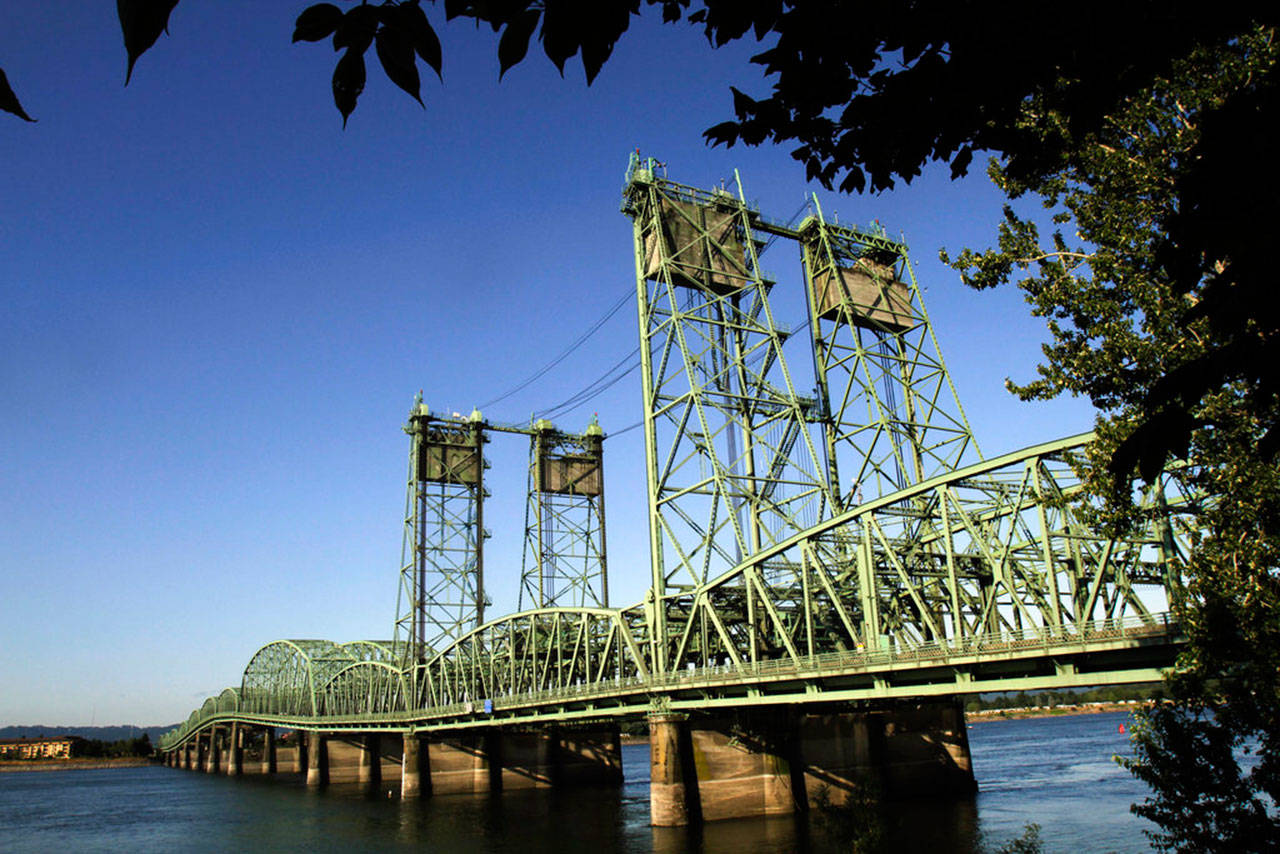By The Herald Editorial Board
At a distance of some 200 miles — and four or more hours as the traffic crawls along I-5 — Interstate 5’s crossing of the Columbia River, connecting Washington state and Oregon, might not seem of great importance for most residents in Snohomish County, especially as they sit in their own jams in traffic on that same interstate.
But as Snohomish County continues its development as a base for manufacturing, it will become increasingly reliant on interstates and highways that can freely move people and freight along that north-south corridor. Not counting the 39,100 jobs in aerospace manufacturing in the county, manufacturing jobs numbered 59,000 this July, according to numbers compiled by Economic Alliance Snohomish County, a nearly 1 percent increase from the year previous.
That growth can’t be sustained if parts and products are bottled up on any stretch of our interstates and highways.
Which is why it’s good news that — more than five years after lawmakers in the Washington state Senate pulled out of negotiations with their counterparts in Oregon regarding replacement of the Columbia River’s interstate bridges — officials in both states are again talking.
Well, they’re talking about talking, but it’s a start.
Washington and Oregon officials could resume talks later this year or early next year about reviving a replacement project for the two I-5 “vertical-lift” bridges that carry a weekday average of 135,000 crossings a day.
Growth in the Portland-Vancouver metro area is a factor in recent congestion, but a significant amount of traffic comes south from the Puget Sound region.
A Washington state Department of Transportation official for the southwest region told The Oregonian this month that the two miles of I-5 between Highway 500 and the bridge is the most congested stretch in this state. Anyone who’s driven into Portland won’t be surprised that average speeds approaching the bridge are just 9 mph, down from 30 mph in 2011.
There’s also the age of the spans to consider, especially in consideration of their ability to ride out a significant earthquake. The southbound bridge is the newest, built in 1958. The older northbound bridge marked its centennial last year.
And further delay on their replacement will mean increased costs for both states.
When Washington lawmakers walked away in 2013, it ended a nearly decade-long $190 million planning effort that included engineering work, permitting and financial and traffic forecasts. Both states have until September 2019 to show the federal government progress in their discussions, or both will be on the hook to repay $140 million that the federal government spent on that earlier planning and preparation.
Nor are the bridges becoming cheaper to maintain. If a replacement isn’t carrying traffic by 2040, The Oregonian reported, the states will need to spend another $280 million on maintenance work. It will take $75 million alone to paint both bridges to protect their aging steel structures.
And every year of delay since 2013 has added costs to the replacement, which was estimated then between $3 billion and $10 billion.
It’s not that there hasn’t been work going on in the background. Last year, the Washington Legislature authorized a $350,000 study that examined the earlier planning and permitting work and found that much of it is still valid or can be updated.
The commitment shown by that study and some fence-mending by Washington officials — and the departure of some senators who pulled the football away in 2013 — has apparently been enough to bring Oregon back to the table.
Those talks and an equitable solution to the bridges’ replacement now have to happen.
Snohomish County residents and businesses will note the challenges of congestion we have on our own highways and interstates, but we also understand how a parochial, Seattle-centric attitude about transportation funding has been to our disadvantage and delayed state action on our stretches of I-5, I-405, U.S. 2 and other regional highways. We, better than many, understand the need for transportation funding that views these corridors as a whole, rather than bits than can divvied up and addressed in a piecemeal fashion.
Our region’s legislators should be encouraged to support a replacement for the bridges over the Columbia, and remind lawmakers in the state’s southwest that we could use their support, too.
Talk to us
> Give us your news tips.
> Send us a letter to the editor.
> More Herald contact information.

























